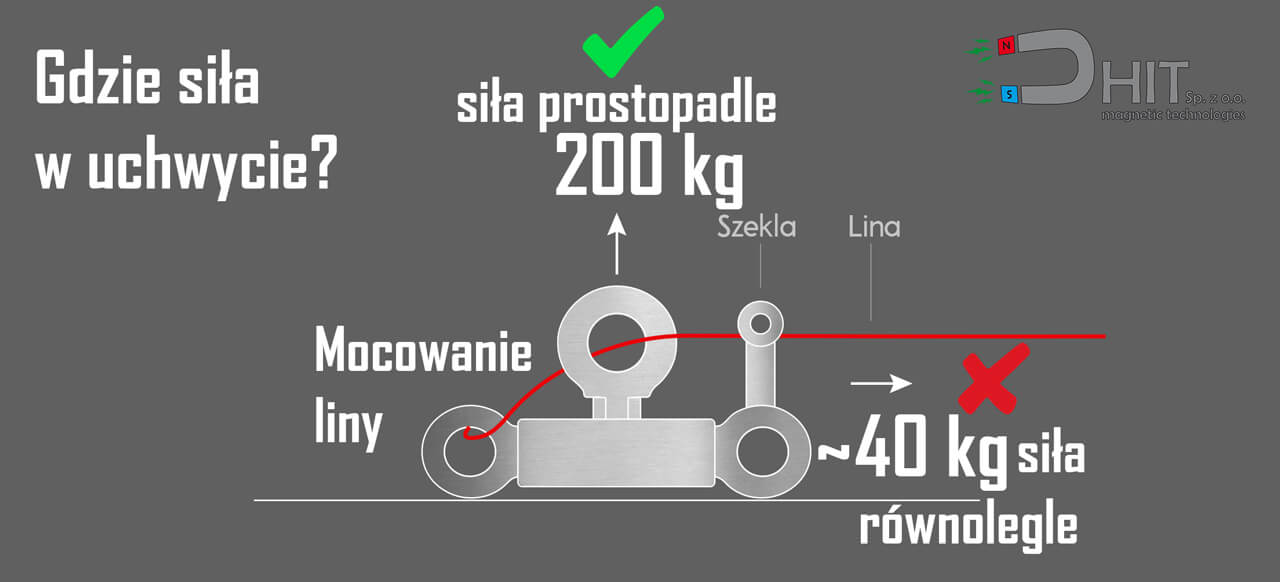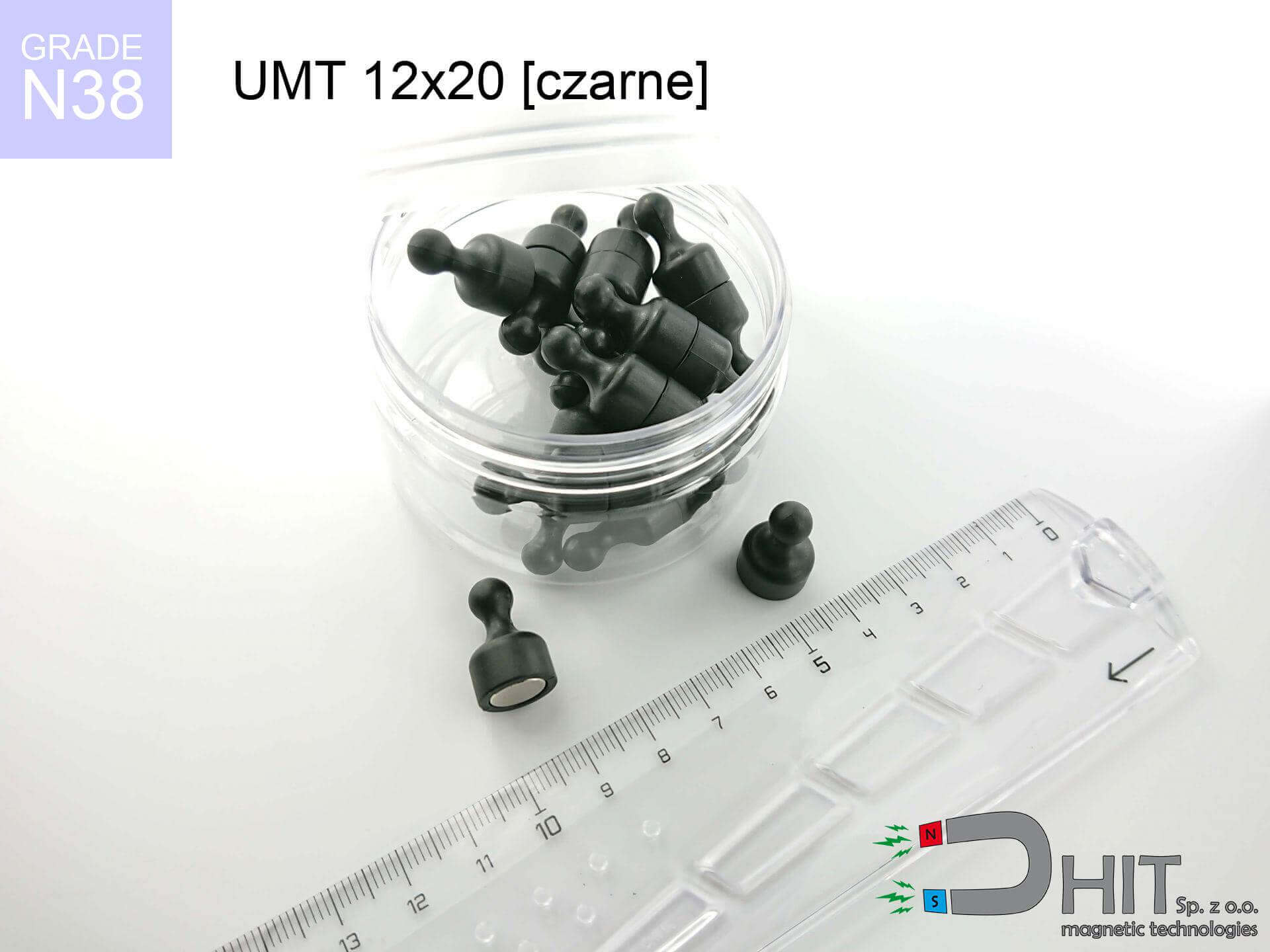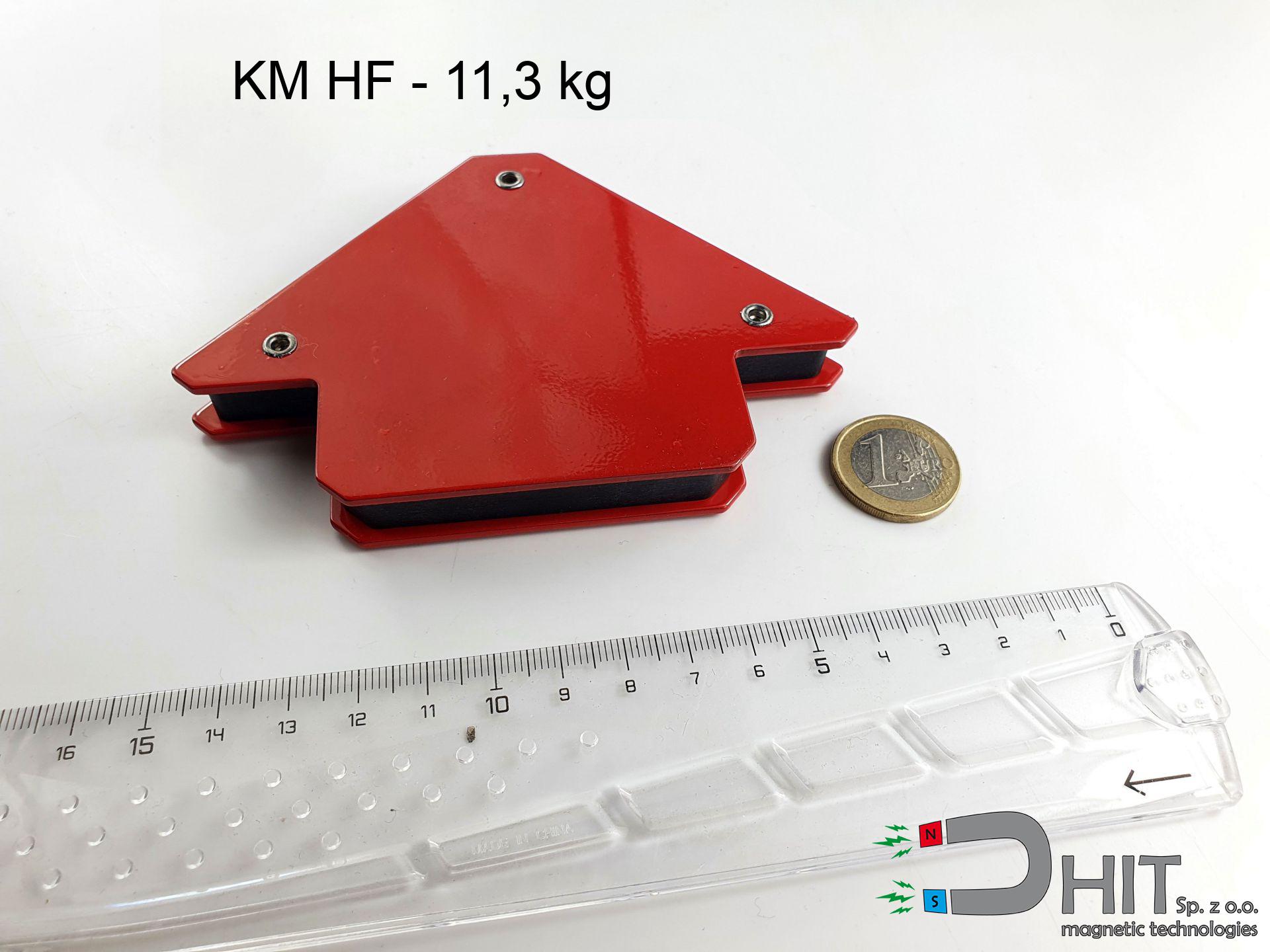UMP 135x40 [M10+M12] GW F 600 kg / N38 - search holder
search holder
Catalog no 210339
GTIN: 5906301813989
Diameter Ø [±0,1 mm]
135 mm
Height [±0,1 mm]
40 mm
Weight
4300 g
Load capacity
680 kg / 6668.52 N
Coating
[NiCuNi] nickel
599.99 ZŁ with VAT / pcs + price for transport
487.80 ZŁ net + 23% VAT / pcs
bulk discounts:
Need more?Not sure about your choice?
Pick up the phone and ask
+48 22 499 98 98
or get in touch through
form
the contact form page.
Specifications along with structure of a magnet can be analyzed on our
online calculation tool.
Orders submitted before 14:00 will be dispatched today!
UMP 135x40 [M10+M12] GW F 600 kg / N38 - search holder
Magnetic properties of material N38
Physical properties of NdFeB
Shopping tips

Advantages and disadvantages of neodymium magnets NdFeB.
Besides their high retention, neodymium magnets are valued for these benefits:
- They virtually do not lose strength, because even after 10 years, the decline in efficiency is only ~1% (based on calculations),
- They protect against demagnetization induced by surrounding magnetic fields very well,
- Because of the lustrous layer of nickel, the component looks visually appealing,
- They exhibit superior levels of magnetic induction near the outer area of the magnet,
- They are suitable for high-temperature applications, operating effectively at 230°C+ due to advanced heat resistance and form-specific properties,
- With the option for tailored forming and personalized design, these magnets can be produced in multiple shapes and sizes, greatly improving design adaptation,
- Key role in cutting-edge sectors – they serve a purpose in HDDs, electric motors, healthcare devices and high-tech tools,
- Compactness – despite their small size, they deliver powerful magnetism, making them ideal for precision applications
Disadvantages of rare earth magnets:
- They are fragile when subjected to a heavy impact. If the magnets are exposed to shocks, it is advisable to use in a protective enclosure. The steel housing, in the form of a holder, protects the magnet from cracks and increases its overall resistance,
- Magnets lose power when exposed to temperatures exceeding 80°C. In most cases, this leads to irreversible performance loss (influenced by the magnet’s profile). To address this, we provide [AH] models with superior thermal resistance, able to operate even at 230°C or more,
- Magnets exposed to moisture can rust. Therefore, for outdoor applications, it's best to use waterproof types made of plastic,
- Limited ability to create precision features in the magnet – the use of a external casing is recommended,
- Health risk due to small fragments may arise, especially if swallowed, which is important in the context of child safety. Moreover, small elements from these assemblies have the potential to interfere with diagnostics once in the system,
- Due to a complex production process, their cost is considerably higher,
Be Cautious with Neodymium Magnets
You should keep neodymium magnets at a safe distance from the wallet, computer, and TV.
Neodymium magnets produce intense magnetic fields that can destroy magnetic media such as floppy disks, video tapes, HDDs, credit cards, magnetic ID cards, cassette tapes, etc. devices. They can also damage videos, televisions, CRT computer monitors. Remember not to place neodymium magnets close to these electronic devices.
Keep neodymium magnets far from youngest children.
Remember that neodymium magnets are not toys. Do not allow children to play with them. Small magnets can pose a serious choking hazard. If multiple magnets are swallowed, they can attract to each other through the intestinal walls, causing severe injuries, and even death.
Dust and powder from neodymium magnets are flammable.
Do not attempt to drill into neodymium magnets. Mechanical processing is also not recommended. Once crushed into fine powder or dust, this material becomes highly flammable.
Neodymium magnets can become demagnetized at high temperatures.
Although magnets have demonstrated their effectiveness up to 80°C or 175°F, the temperature can vary depending on the type, shape, and intended use of the specific magnet.
Neodymium magnets are the strongest magnets ever created, and their power can surprise you.
On our website, you can find information on how to use neodymium magnets. This will help you avoid injuries and prevent damage to the magnets.
Neodymium magnets can attract to each other, pinch the skin, and cause significant injuries.
Neodymium magnets will bounce and also contact together within a distance of several to around 10 cm from each other.
Under no circumstances should neodymium magnets be brought close to GPS and smartphones.
Neodymium magnets produce strong magnetic fields that interfere with magnetometers and compasses used in navigation, as well as internal compasses of smartphones and GPS devices.
Neodymium magnetic are characterized by being fragile, which can cause them to become damaged.
Magnets made of neodymium are delicate and will crack if allowed to collide with each other, even from a distance of a few centimeters. Despite being made of metal as well as coated with a shiny nickel plating, they are not as hard as steel. At the moment of connection between the magnets, small sharp metal pieces can be propelled in various directions at high speed. Eye protection is recommended.
People with pacemakers are advised to avoid neodymium magnets.
Neodymium magnets generate very strong magnetic fields that can interfere with the operation of a pacemaker. This happens because such devices have a function to deactivate them in a magnetic field.
The magnet is coated with nickel - be careful if you have an allergy.
Studies clearly indicate a small percentage of people who suffer from metal allergies such as nickel. An allergic reaction often manifests as skin redness and rash. If you have a nickel allergy, you can try wearing gloves or simply avoid direct contact with nickel-plated neodymium magnets.
Warning!
To illustrate why neodymium magnets are so dangerous, see the article - How dangerous are powerful neodymium magnets?.

![holders for fishing in water UMP 135x40 [M10+M12] GW F 600 kg / N38 holders for fishing in water UMP 135x40 [M10+M12] GW F 600 kg / N38](https://cdn3.dhit.pl/graphics/banners/magnet.webp)
![UMP 135x40 [M10+M12] GW F 600 kg / N38 - search holder](https://cdn3.dhit.pl/graphics/products/ump135x40-m10+m12-gw-f-600-kg-luz.jpg)



![UMP 107x40 [M8+M10] GW F400 Lina / N38 - search holder UMP 107x40 [M8+M10] GW F400 Lina / N38 - search holder](https://cdn3.dhit.pl/graphics/products/ump-107x40-m8+m10-gw-f400-+lina-bel.jpg)

